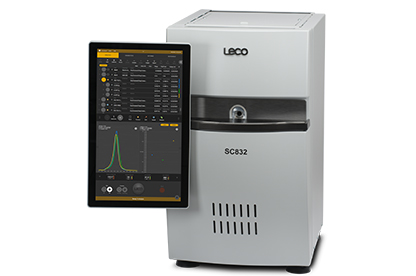Our innovative analytical instrumentation provides users with solutions for a wide range of organic and inorganic applications. We want to help your lab succeed, which is why we share examples of the processes, methods of analysis, and results our instruments can obtain in the form of application notes. We want our current and potential customers to feel at ease with our instrumentation in the lab, and our application notes highlight the right instrument for your application.
 Carbon and Sulfur Determination in Soda-Lime Glass
Carbon and Sulfur Determination in Soda-Lime Glass
In this application note, our CS744 carbon and sulfur determinator utilizes an induction furnace for the rapid analysis of soda-lime glass. It determines the total amount of sulfur present in the glass, which is relative to the amount of sulfide or sulfate retained. This value can be used to relate the quality (amount of bubbles present) and color of the glass to the sulfur level, giving production and quality control personnel a direct metric of overall process effectiveness. You can read more about the sample preparation, accessories, method parameters, procedure, and results in the application note here.
Sulfur Determination in Battery Paste (PbO/PbSO4)
The determination of sulfur in battery paste is an important battery manufacturing quality control step as battery performance and life expectancy are determined by the properties of the paste. Qualities such as manufacturability, electrochemical efficiency, and durability under charge/discharge cycling are all based upon the nature of the lead sulfate in the paste. Our induction furnace sulfur determinators provide a reliable means of making this determination at a pace quick enough to meet the most demanding quality control plan. Check out the application note for a closer look at this analysis.
Sulfur and Carbon Determination in Soda-Lime Glass
 Similarly to the application note above, the SC832HT can also determine the total amount of sulfur present in soda-lime glass, which is relative to the amount of sulfide or sulfate retained. This value can be used to relate the quality (amount of bubbles present) and color of the glass to the sulfur level, giving production and quality control personnel a direct metric of overall process effectiveness.
Similarly to the application note above, the SC832HT can also determine the total amount of sulfur present in soda-lime glass, which is relative to the amount of sulfide or sulfate retained. This value can be used to relate the quality (amount of bubbles present) and color of the glass to the sulfur level, giving production and quality control personnel a direct metric of overall process effectiveness.
The application note will outline the sample preparation, accessories, method parameters, and procedure to quickly and precisely determine the amount of sulfur present in soda-lime glass, you can view it here.





